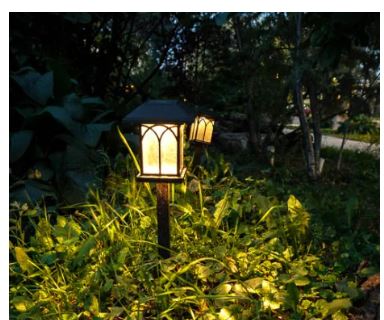
Easy Gardening Tips in USA: A Complete Guide for Beginners
Gardening is one of the most rewarding hobbies in the United States. Whether you live in a suburban home with a backyard, an urban apartment with limited space, or a farmhouse with acres of land, gardening can bring you closer to nature, reduce stress, and even save money on groceries. The best part? You don’t need to be an expert to get started. With the right approach, tools, and knowledge, anyone can create a thriving garden.
In this comprehensive guide, we’ll share easy gardening tips in USA that are beginner-friendly, practical, and effective for different climates and regions.
Why Gardening is Popular in the USA know more https://www.glenwildgardens.com
Before diving into tips, let’s understand why gardening has become a growing trend across America:
- Health Benefits: Growing your own fruits and vegetables ensures fresh, chemical-free food.
- Stress Relief: Spending time outdoors and working with plants reduces anxiety and improves mental well-being.
- Environmental Impact: Home gardens help reduce carbon footprints and support local ecosystems.
- Cost Savings: With rising grocery prices, growing herbs, vegetables, and fruits at home can save significant money.
- Aesthetic Appeal: A well-maintained garden increases property value and curb appeal.
Easy Gardening Tips in USA for Beginnershttps://www.gardeningknowhow.com
1. Start Small and Simple
Many beginners make the mistake of planting too much at once. Instead, start small:
- Choose 3–5 easy plants like tomatoes, basil, lettuce, or marigolds.
- Use containers or raised beds if you have limited space.
- Expand your garden as you gain confidence.
2. Choose the Right Location
Location matters more than the type of plant. Follow these guidelines:
- Most vegetables and flowers need 6–8 hours of direct sunlight daily.
- Pick a spot with good air circulation to prevent fungal diseases.
- Make sure the area has easy access to water.
3. Understand Your Hardiness Zone
The USA is divided into USDA Hardiness Zones (1–13) that determine which plants thrive in specific regions. For example:
- Zone 3–5 (Northern states like Minnesota, Montana) → Cold-hardy crops such as kale, spinach, and carrots.
- Zone 7–9 (Southern states like Texas, Florida) → Warm-season crops like peppers, citrus, and okra.
- Zone 10–13 (California, Hawaii) → Tropical plants such as bananas and avocados.
Knowing your zone helps you avoid planting crops that won’t survive your climate.
4. Invest in Quality Soil
Soil is the foundation of gardening. Poor soil means weak plants.
- Use well-draining soil enriched with compost or organic matter.
- Avoid compacted clay soil—improve it with sand and compost.
- For containers, use potting mix instead of garden soil.
5. Water Wisely
Watering seems simple, but many beginners overwater or underwater their plants.
- Water deeply but less often—this encourages strong root growth.
- Early morning is the best time to water.
- Use a soaker hose or drip irrigation to save water.
- For containers, check soil moisture daily as pots dry out faster.
6. Use Mulch for Easy Maintenance
Mulch helps retain moisture, suppress weeds, and regulate soil temperature.
- Organic mulch options: wood chips, straw, shredded leaves, or grass clippings.
- Apply 2–3 inches of mulch around plants.
- Avoid piling mulch against plant stems to prevent rot.
7. Pick Easy-to-Grow Plants
If you’re just starting, choose plants known for being hardy and low-maintenance. Some beginner-friendly options in the USA include:
- Vegetables: Tomatoes, cucumbers, zucchini, lettuce, radishes.
- Herbs: Basil, mint, parsley, rosemary, chives.
- Flowers: Sunflowers, marigolds, zinnias, petunias.
8. Compost for Free Fertilizer
Instead of buying chemical fertilizers, create your own compost pile.
- Add kitchen scraps (vegetable peels, coffee grounds, eggshells).
- Mix with yard waste (grass clippings, dried leaves).
- Turn the pile regularly for faster decomposition.
- In 2–3 months, you’ll have rich compost to feed your plants.
9. Control Weeds the Natural Way
Weeds compete with plants for nutrients and sunlight. Try these methods:
- Use mulch to block weed growth.
- Pull weeds regularly before they set seeds.
- Try vinegar spray for natural weed control.
- Avoid chemical herbicides if growing edible plants.
10. Protect Your Plants from Pests
Every gardener faces pests, but prevention is easier than cure.
- Plant companion crops (like basil near tomatoes to repel insects).
- Encourage beneficial insects like ladybugs and bees.
- Use natural solutions like neem oil or soapy water spray.
- Install fencing or netting to keep rabbits and deer away.
11. Use Containers for Small Spaces
Not everyone has a backyard, but container gardening works well in apartments or patios.
- Choose large pots with drainage holes.
- Grow herbs, peppers, or even dwarf fruit trees in containers.
- Use vertical gardening with trellises to save space.
12. Practice Seasonal Planting
Planting at the right time of year ensures better success.
- Spring (March–May): Tomatoes, beans, cucumbers, sunflowers.
- Summer (June–August): Peppers, okra, herbs, heat-tolerant flowers.
- Fall (September–November): Kale, broccoli, lettuce, carrots.
- Winter (December–February): Indoor herbs, microgreens, hardy greens.
13. Learn Basic Pruning
Pruning improves air circulation and promotes growth.
- Trim dead leaves and branches.
- Pinch back herbs like basil to encourage bushy growth.
- For fruiting plants, remove suckers to improve yield.
14. Use Raised Garden Beds
Raised beds are popular in the USA because they make gardening easier.
- Better soil drainage and aeration.
- Less bending, making it senior-friendly.
- Fewer weeds compared to traditional in-ground gardens.
15. Be Consistent and Patient
Gardening is not an overnight process.
- Monitor your plants daily for signs of pests or disease.
- Don’t get discouraged by failures—every gardener learns through trial and error.
- Keep experimenting and improving your skills.
Gardening Trends in the USA
Some modern gardening trends are making gardening even easier:
- Smart Gardening Tools: Self-watering pots, moisture sensors, and gardening apps.
- Organic Gardening: Chemical-free methods are gaining popularity.
- Urban Gardening: Rooftop gardens, balcony plants, and community gardens.
- Native Plant Gardening: Growing plants that naturally thrive in your region, saving water and effort.
Common Mistakes to Avoid
- Planting too many varieties at once.
- Ignoring soil quality.
- Overwatering or watering at the wrong time.
- Using too much chemical fertilizer.
- Neglecting pest prevention.
Conclusion
Gardening in the USA doesn’t have to be complicated. By starting small, choosing the right plants, and following these easy gardening tips, anyone can build a thriving garden. Whether your goal is fresh vegetables, beautiful flowers, or a relaxing hobby, gardening is a journey that brings lifelong benefits.
Remember: The best gardens grow with patience, care, and consistency.
.
